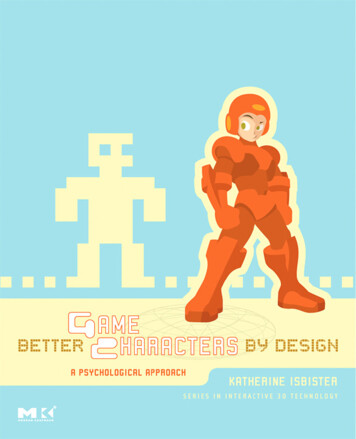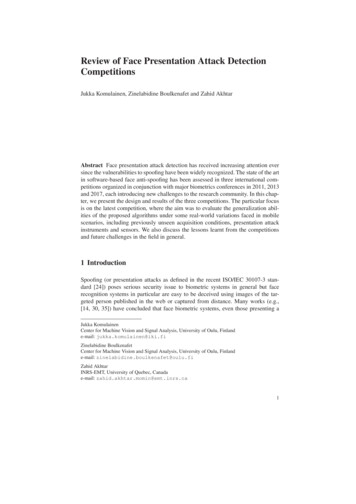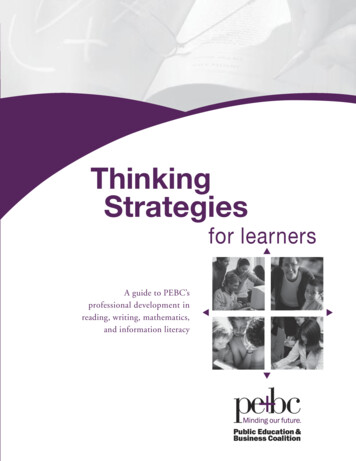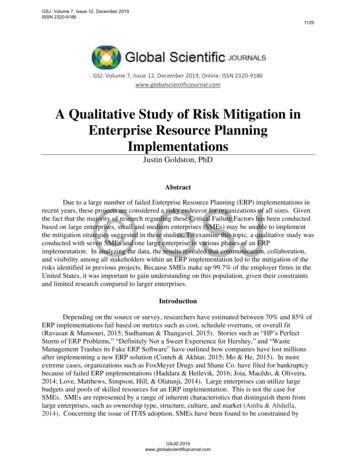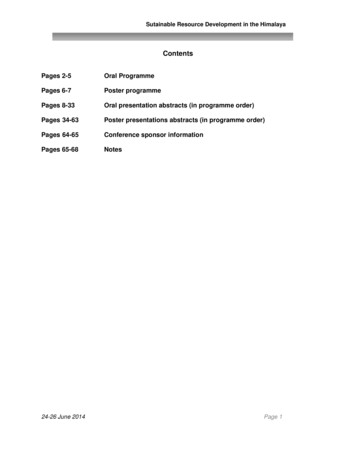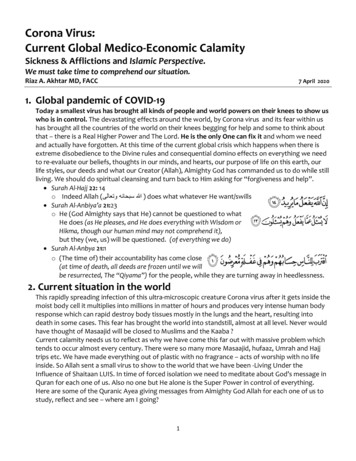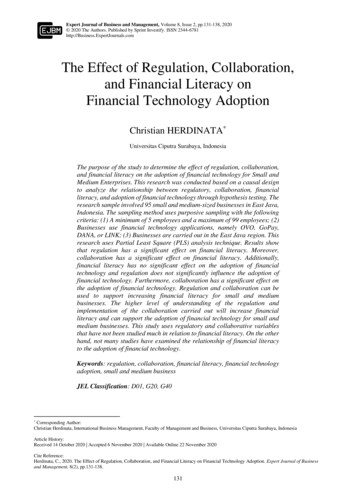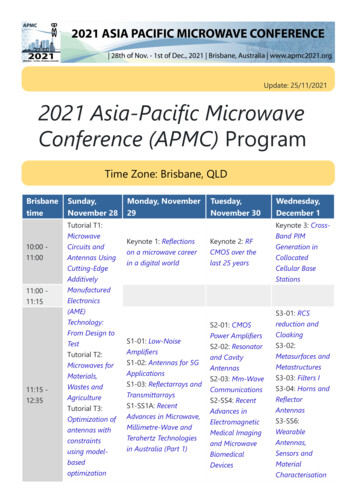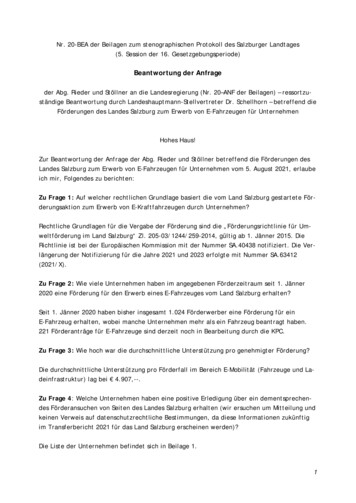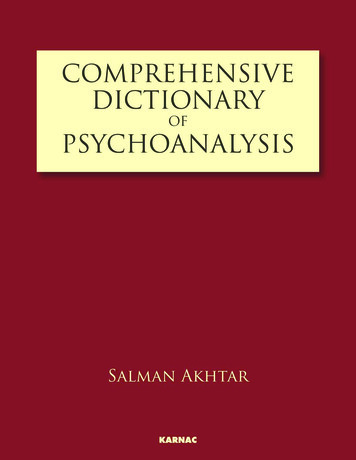
Transcription
Akhtar prelims CORREX 7/16/09 5:30 PM Page 6789501234567COMPREHENSIVE DICTIONARYOF PSYCHOANALYSIS
Akhtar prelims CORREX 7/16/09 5:30 PM Page 4567895012345671
Akhtar prelims CORREX 7/16/09 5:30 PM Page 456789501234567COMPREHENSIVE DICTIONARYOF PSYCHOANALYSISSalman Akhtar M.D.
Akhtar prelims CORREX 7/16/09 5:30 PM Page 4567895012345671First published in 2009 byKarnac Books Ltd118 Finchley Road, London NW3 5HTCopyright 2009 Salman AkhtarThe right of Salman Akhtar to be identified as the author of this work has been asserted in accordance with §§ 77and 78 of the Copyright Design and Patents Act 1988.All rights reserved. No part of this publication may be reproduced, stored in a retrieval system, or transmitted, inany form or by any means, electronic, mechanical, photocopying, recording, or otherwise, without the prior written permission of the publisher.British Library Cataloguing in Publication DataA C.I.P. for this book is available from the British LibraryISBN-13: 978 1 85575 860 5Edited, designed and produced by The Studio Publishing Services Ltd,www.publishingservicesuk.co.uke-mail: studio@publishingservicesuk.co.ukPrinted in Great Britainwww.karnacbooks.com
Akhtar prelims CORREX 7/16/09 5:30 PM Page 6789501234567CONTENTSABOUT THE NS OF PSYCHOANALYTIC TERMS AND CONCEPTS1AN ANNOTATED LIST OF PSYCHOANALYTIC GLOSSARIES312REFERENCES319v
Akhtar prelims CORREX 7/16/09 5:30 PM Page 4567895012345671ToAll the individuals whose work is cited in this book, for they are the ones who have collectively constructed the vocabulary of psychoanalysis, with celebratory gratitude.All those contributors to analytic literature whose work I have inadvertently omitted orinoptimally represented, with sincere apologies.All those colleagues who would resist the temptation to point out my errors and omissions,with brotherly humour.My wife, friend, and fellow psychoanalyst, Monisha Nayar, with profound love.
Akhtar prelims CORREX 7/16/09 5:30 PM Page 456789501234567ABOUT THE AUTHORSalman Akhtar, MD, was born in India and completed his medical and psychiatric educationthere. Upon arriving in the United States in 1973, he repeated his psychiatric training at theUniversity of Virginia School of Medicine, and then obtained psychoanalytic training from thePhiladelphia Psychoanalytic Institute. Currently, he is Professor of Psychiatry at JeffersonMedical College and a Training and Supervising Analyst at the Psychoanalytic Center ofPhiladelphia. He has served on the editorial boards of the International Journal of Psychoanalysisand the Journal of the American Psychoanalytic Association. His more than 300 publicationsinclude nine books: Broken Structures; Quest for Answers; Inner Torment; Immigration and Identity;New Clinical Realms; Objects of Our Desire; Regarding Others; Turning Points in DynamicPsychotherapy; and The Damaged Core, as well as twenty-seven edited or co-edited volumes inpsychiatry and psychoanalysis, and six collections of poetry. Dr Akhtar has delivered manyprestigious addresses and lectures, including a Plenary Address at the Second InternationalCongress of the International Society for the Study of Personality Disorders in Oslo, Norway(1991), an Invited Plenary Paper at the Second International Margaret S. Mahler Symposiumin Cologne, Germany (1993), an Invited Plenary Paper at the Rencontre Franco-Americaine dePsychanalyse meeting in Paris, France (1994), an Invited Keynote Address at the AnnualMeetings of Division 39 of the American Psychological Association (1994), the PlenaryAddress at the Annual Meetings of the Canadian Psychoanalytic Association (2002), and aKeynote Address at the IPA Congress in Rio de Janiero, Brazil (2005). Dr Akhtar is the recipient of the Journal of the American Psychoanalytic Association's Best Paper of the Year Award(1995), the Margaret Mahler Literature Prize (1996), the ASPP's Sigmund Freud Award (2000),the American Psychoanalytic Association's Edith Sabshin Award (2000), ColumbiaUniversity's Robert Liebert Award for Distinguished Contributions to Applied Psychoanalysis(2004), the APA's Kun Po Soo Award (2004), and the APA's Irma Bland Award for being theOutstanding Teacher of Psychiatric Residents in the country (2005). An internationally-soughtspeaker and teacher, Dr Akhtar is also a Scholar-in-Residence at the Inter-Act TheatreCompany in Philadelphia.vii
Akhtar prelims CORREX 7/16/09 5:30 PM Page 234567895012345671
Akhtar prelims CORREX 7/16/09 5:30 PM Page 56789501234567ACKNOWLEDGEMENTSDr Michael Vergare, Chairman of the Department of Psychiatry at Jefferson Medical College,helped sustain the academic environment where I could conduct my work in a meaningfulfashion. The department’s two Vice-Chairs, Drs Mitchell Cohen and Elisabeth Kunkel, as wellas its Director of Residency Training, Dr Kenneth Certa, gave me ample opportunities andfreedom to continue my scholarship. Dr Robert McFadden and Ms Pamela Kasinetz, my associates in running the department’s outpatient clinic, and Dr Jacob Widroff, the clinic’s ChiefResident, protected me from administrative chores on numerous occasions. Drs Rajnish Mago,and Stephen Schwartz, fellow faculty members in the department, also helped in subtle andindirect ways. To all these individuals, my sincere thanks indeed.As can be imagined, work of this magnitude can hardly be done alone. I have been fortunatethat, whenever I needed help, I was able to find it. Regardless of whether it involved finding aparticular reference, locating an old or out of print book, translating a foreign language phraseor passage, checking the origin of an obscure term, or selecting terms pertaining to specializedareas of applied psychoanalysis, there was someone to whom I could turn for help, someonewho was glad to help; none of my frantic phone calls or e-mails remained unanswered. The listof those who helped me and to whom I am utterly grateful is long and includes fellow psychoanalysts from my depth-psychological alma mater, the Psychoanalytic Center of Philadelphia,analytic colleagues from all over this country and abroad, psychiatrists, friends and acquaintances, family members, students, supervisees, and still others who defy categorization. Analphabetical list of those from the mental health field alone includes Drs Jennifer Bonovitz, IraBrenner, Daniel Freeman, Peter Hoffer, Abigail Kay, Susan Levine Mark Moore, Henri Parens,Andrew Smolar, and David Steinman (all from Philadelphia) as well as Rosemary Balsam(New Haven, CT), Melvin Bornstein (Birmingham, Michigan), Fred Busch (Boston), DianaConstance (Bloomfield Hills, Michigan), Henk-Jan Dalewijk (Amsterdam), James Fosshage(Boston), Axel Hoffer (Boston), Theodore Jacobs (New York), Angelica Kloos (Washington,DC), Eddy de Klerk (Amstelveen, Holland), Saida Koita (Miami), Laurie Kramer (Great Neck,NY), Manasi Kumar (London), Sergio Lewkowicz (Porto Allegre, Brazil), Bert van Luyn(Amsterdam), Paul Mosher (Albany, NY), Edward Nersessian (New York), Monroe Pray(Baltimore), Dwarkanath Rao (Ann Arbor, Michigan) , Joseph Reppen (New York), Irvin Rosen(Topeka, KS), Julian Stern (London), Pratyusha Tummala-Narra (Novi, Michigan),Madhusudana Rao Vallabhneni (Toronto), and Vamik Volkan (Charlottesville, VA).I wish to thank Mr Cesare Sacerdoti, the former Publications Director of the InternationalPsychoanalytical Association, for putting me in touch with Mr Oliver Rathbone of Karnacix
Akhtar prelims CORREX 7/16/09 5:30 PM Page 0123456789401234567895012345671Books, the publisher of this book. I am also grateful to Messrs Michael Molnar and Ivan Wardof the Freud Museum in London, who shared valuable details on aspects of Freud’s officeincluded in this book.Three other individuals deserve special mention. Shalini (‘Tini’) Maitra, the daughter of mygood friends, Shantanu and Rachana Maitra, traced the origin of many terms with diligence.My personal friend, Dr James Anderson (‘Andy’) Thomson, Jr supported me at each step ofthis sojourn. His kind words of encouragement sustained my effort and his marathon derivedquip, made during a conversation near the end of this project, that ‘look, you can see the stadium now’ rejuvenated my pace just when I had begun to feel exhausted. My secretary,Melissa (‘Missy’) Nevin, typed and collated this behemoth of a manuscript besides helping ininnumerable other ways, which include deciphering my handwriting, conducting librarysearches, scanning internet sites, finding source materials, making phone calls to find missingpieces of information, and assuring that multiple copies of the manuscript always existed sothat a computer glitch would not cause a fiasco of unbearable proportions. She put up withmy demands which, not infrequently, had a bit of infantile urgency about them. To Tini, Andy,and Missy, my gratitude is profound. I feel similarly towards my assistant, Jan Wright, as wellas to The Studio Publishing Services in the UK, all of whom went through and survived theoccasionally tortuous copy-editing process with me and were forever forthcoming and graceful.Finally, I wish to thank my wife and fellow psychoanalyst, Monisha Nayar. Her love, friendship, patience, sacrifices, editorial comments, and computer skills that far exceed mine wereinvaluable in the course of my writing this book. If I could say it in Urdu, my mother tongue,I would have said: Tum na hotey to kuchh nahin hota.Salman AkhtarPhiladelphia, June 2009x
Akhtar prelims CORREX 7/16/09 5:30 PM Page 56789501234567INTRODUCTIONLike a dream, this book owes its origin to sources from both ‘below’ and ‘above’. An earlystimulus for it was provided by Henk-Jan Dalewijk and Bert van Luyn, who suggested that Iprepare a handout defining various terms I was using during a teaching workshop at theirhospital in Amersfoort, Holland. Some major professional achievements and comparably significant disappointments around the same time led to the confidence and the need, respectively, for my undertaking this gigantic task. And, as might be expected, the influence ofchildhood experiences also played a role here. Prominent among these were my parent’s profound love of language, happy memories of cricket-related records and mnemonics, and thepainful episode of a ruined rare stamp collection. The motives for writing this book thusincluded a didactic imperative for clarity, celebratory muscle-flexing, compensatory self-assertion, extension of family legacy in a new direction, and reparative drive towards some earlywounds.Motives aside, the nature of such praxis itself demands explanation. Many questions arise.What is my purpose in writing this book? How did I select the terms and concepts includedhere? Did I consult the existing psychoanalytic glossaries? Was the number of entries fixedfrom the beginning or did it keep increasing as the project unfolded? How often did I revisita definition I had ‘satisfactorily’ completed? Did I really do all this work by myself? All alone?How confident was I of my ability to bring it to completion? And, finally, how do I feel aboutthis, the finished product in your hands?Let me start with the purpose of this book. Well, the fact is that the book has many purposes.To begin with, it is intended to create a civilized order out of a delicious chaos. The vastlyimproved access to the psychoanalytic literature as a result of computerization has notresulted in synthesizing the scattered material into a harmonious gestalt. This dictionarymakes an effort to do that. It recounts the origin of each term, mentions the nuances that wereadded later on, and brings the term’s definition up-to-date with our current psychoanalyticknowledge. Wherever possible, it synthesizes the views of a concept by differing ‘schools’ ofpsychoanalysis, and thus strives to create a common vocabulary for a layered and complexconceptualization. It also provides clinically useful hints by commenting on the technicalimplications of the terms and concepts defined. And, by citing major references in connectionwith each entry, it acts as a source for furthering one’s knowledge in this or that particulararea of psychoanalysis. Finally, by including both familiar terms (that are in everyday use) andunfamiliar ones (including those which have become obsolete and those which never caughtxi
Akhtar prelims CORREX 7/16/09 5:30 PM Page 23456789401234567895012345671on in the first place) the Dictionary seeks to deepen and expand the scope of psychoanalyticlanguage.As far as the selection of the terms and concepts is concerned, my method was the following. I first consulted the major psychoanalytic glossaries (Eidelberg, 1968; Rycroft, 1968; Mooreand Fine, 1968, 1990; and Laplanche and Pontalis, 1973) and the index to the Standard Editionof Sigmund Freud’s works to develop a basic list from which I would begin working. Then Iwent over the index of Otto Fenichel’s (1945) compendium of early psychoanalytic literatureand Alexander Grinstein’s (1966) index to the psychoanalytic writings to add more terms andconcepts. Subject indexes of text books and encyclopedias of psychoanalysis (Nersessian &Kopff, 1996; Moore & Fine, 1995; Erwin, 2002; Person, Cooper, and Gabbard, 2005) also cameto my rescue. Not fully satisfied with the result, I moved on to Paul Mosher’s (1990) Title KeyWord and Author Index to Psychoanalytic Journals: 1920–1990; its updated electronic version, theso-called PEP disc was my next stop. Finally, I hand-searched the volumes of three major psychoanalytic journals, namely, The Journal of the American Psychoanalytic Association, InternationalJournal of Psychoanalysis, and Psychoanalytic Quarterly, for more terms and concepts.I wanted to cast my net even more widely and go beyond the clinical realm. It seemed tome that ideas from ‘applied ‘psychoanalysis also need to be included here. Therefore, I soughtthe help of my friends and colleagues involved in Holocaust studies, immigration literature,psychoanalytically informed political work and culture-specific psychoanalytic concepts fromnon-Western societies (e.g., India, Korea, and Japan) and collected more terms. And, as I begandoing the required reading and then writing definitions, I repeatedly came across new termsand new concepts that demanded inclusion. For a long time, such lexical encounters wereexhilarating and jubilant. Finding yet another member of our rich lexicon would fill my heartup with thrill and joy. Gradually, however, such discoveries became burdensome. The workbegan to cause me fatigue. Still later, imbued with hostile projections on my part, new wordsbegan to appear menacing. The humility I had earlier felt in learning more every day grewinto anger at those who invented novel terms. Had they only familiarized themselves withothers’ writings on the subject, they would not have ‘dared’ to be inventive. Clearly, I wasoscillating between depressive and paranoid positions.I would write a definition and be satisfied with it only to learn more about the topic later andfeel the need to rework the earlier write-up. One moment, epistemic gluttony passed itself offas academic honesty. The next moment, the masquerade was in the opposite direction.Completion, the goal which I desperately desired, seemed elusive. Caught in the Web of Words(Murray, 2001), I became both The Professor and the Madman (Winchester, 1999). I read at home,in my office, on planes, trains, subways, and I read while crossing streets. I even read while driving and at all these places, jotted down important points in my mind and, sometimes, onpaper. I ignored some responsibilities and met others half-heartedly. I could not keep up withelectronic and written correspondence. Letters and e-mails went unanswered, papers unread.At times, I thought I was going mad. At other times, I knew I was mad. Deeply and privately. Iwould write one or two definitions, and add two or three more to the list. The more I wrote, themore there was to be written. Like Sisyphus, I was trapped in an unending endeavour.The wish to give up whispered its poisonous lullaby to me more than once. But all thisbegan only when I was about two-thirds the way through the project. Why did I not give up?I do not know what it was, but some inner discipline, some ancestral calling, some sense ofscholarly purpose kept pushing me. Like Korczak Ziolkowski (1908–1982), the PolishAmerican orphan from Boston who grew up to undertake the carving of the world’s largeststatue (in honour of the Indian chief, Crazy Horse), I was determined. I kept working. And,surely, a day came when the Snow of Insurmountability melted and the Sun of HappyEndings began to shine. Now I was proud and humming with joy.xii
Akhtar prelims CORREX 7/16/09 5:30 PM Page 2345678940123456789501234567The task I had undertaken was not only formidable in its magnitude, it was also exceedingly complex. Part history, part literature, part psychoanalysis, and part sheer detective work,it required diverse skills and significant containing capacities. It involved paying close attention to one topic at a time and then, with an equal degree of resolve, to give it up and moveon to the next one needing attention. The work also demanded good manners. This appliedto both my own contributions and to those of others. About including my work, I had to walkon the tightrope between the sin of self-promotion and the travesty of masochistic self-effacement. Regarding the work of others, too, there were dilemmas to be negotiated. To begin with,some analysts came across as temperamentally more inventive than others; they liked to makeup new terms all the time. These had to be included but this created the unintended illusionthat others—equally talented but less given to lexical innovations—had not contributed topsychoanalysis in significant ways. Another major challenge was posed by the issue of precedence: who had used a certain term first? This became more difficult when a particular term(e.g., ‘malignant narcissism’, ‘self-object’) had been widely associated with a renowned individual’s name but turned out to have been coined by someone else. At times, the same term(e.g. ‘phallus’, ‘oral triad’) had entirely different meanings in different hands. At other times,the same concept had been described under different names (e.g., ‘golden fantasy’ and ‘NobelPrize complex’). Complications, complications. And then there were terms and expressionswhose origin could not be traced to a paper, book chapter, or a monograph; they originatedin the course of administrative meetings of this or that psychoanalytic society (e.g.,‘analysability’), or popped up during informal conversations over drinks (e.g., ‘neuropsychoanalysis’). How did I find this out?Others entered the stage at this point in the play. Wife, friends, colleagues, familiar and unfamiliar members of ‘The American’, secretary, supervisees, students, some young kids from myneighbourhood, close and remote family members, all offered me assistance in finding this orthat fact, telling me such and such interesting anecdote, and, above all, to ‘hold’ me in theirforebearance and grace as I plodded along towards the finish line and, one fine afternoon inJune 2008, crossed it.Now, the final question: how satisfied am I with the end product? No answer to this question can bypass Sigmund Freud’s (1937c) celebrated ‘terminable and interminable’ phrase. Thewriting of a dictionary is hardly something that can be regarded as complete. If writing dictionaries were a profession, Freud would have surely included it among the ones he called‘impossible’. A dictionary does not come to an end. The author only approximates an illusoryclosure, reaches a compromise between scholarly failure and literary satiety. I am no exception. I know that what I have been able to accomplish is wide-ranging, informative, and theoretically well-grounded. But I also realize that what I have placed in your hands is ultimatelyan incomplete and flawed product. It perhaps omits, or inoptimally represents, the work ofsome analysts and overemphasizes that of others. Though I am loath to admit this, it is certainly possible that, due to the limits of my scholarly reach, some misattributions haveoccurred and a few important concepts are not included here.My hope is that, despite its weaknesses, this compendium of psychoanalytic terminologywill become a useful source of knowledge for psychoanalytic students worldwide, an impetus to think and rethink the ideas we take for granted in our discourse, and a tool for teaching and research both within and outside the field of psychoanalysis. Above all, though, Iwant my reader to join me in the spirit in which this work was undertaken. This spirit is oneof adventure, play, dreaming big dreams, and then having the determination and perseverance to turn them into reality.xiii
Akhtar prelims CORREX 7/16/09 5:30 PM Page 34567895012345671
Akhtar prelims CORREX 7/16/09 5:30 PM Page 56789501234567‘I do not overlook the fact that the path from the letter A to the end of the alphabet is a verylong one, and that to follow it would mean an enormous burden of work for you. So do notdo it unless you feel an internal obligation—only obey a compulsion of that kind and certainlynot any external pressure’(Sigmund Freud in a letter to Richard Sterba, 3 July 1932, when the latter had begunwork on a psychoanalytic glossary. Sterba’s Handworterbuch der Psychoanalyse (1936–1937)was published in an incomplete form with entries only from the letters A to G.It never reached the end of the alphabet.)
Akhtar prelims CORREX 7/16/09 5:30 PM Page 34567895012345671
Akhtar correx 7/16/09 3:01 PM Page 1Accordion 93012345678940123456789501234567AAbreaction: concept introduced by SigmundFreud in 1893 to denote the fact that pent-up emotions associated with a trauma can be dischargedby talking about it. The release of affect occurredby bringing ‘a particular moment or problem intofocus’ (Freud, 1914g, p. 147) and as such formedthe cornerstone of Freud’s early cathartic methodof treating hysterical conversion symptoms. Overthe later course of evolution of psychoanalysis,however, the concept of abreaction lost its centrality to the treatment method. It came to be recognized as secondary to insight derived frominterpretation. None the less, Edward Bibring(1954), in his widely-read paper ‘Psychoanalysisand the dynamic psychotherapies’, included abreaction among the five therapeutic tools of psychoanalysis (the other four being ‘suggestion’,‘manipulation’, ‘clarification’, and ‘interpretation?’; separate entries on each of them are to befound in this dictionary). Bibring regarded abreaction, or ‘emotional reliving’, as offering evidence and establishing credibility of the actualityof repressed material to the patient. VamikVolkan (1976) agreed with this, but added thatabreaction in the ‘classical’ sense also occurs intreatment. He noted that abreaction differs from‘emotional flooding’ (see separate entry) in so faras some secondary process functioning andobserving ego is retained in the former. As aresult, during an abreaction, the patient can makeconnections between his emotional and ideationalfields of experience while he cannot do so duringemotional flooding.Abstinence: it was in the course of elucidating‘transference love’ and what might be appropriatetherapeutic stance in regard to such ‘love’ thatSigmund Freud (1915a) sternly declared that ‘thetreatment must be carried out in abstinence’(p. 165). By this, he meant that the analyst mustnot gratify the patient’s demands for overtor covert erotic indulgences. To do so wouldappease the neurotic suffering by substitute pleasures and thwart its deeper resolution by themeans of interpretation. While initially restrictedto libidinal pressures in transference, the ‘rule ofabstinence’ applies to negative transferences also.The analyst must not be tempted to disprove thathe or she is not as ‘bad’ as the patient thinks. Allin all, the principle of abstinence requires that weneither attempt to modify the transference byindulging the patient nor by changing our behaviour or by insisting upon our own view of who weactually are. Four more things need to emphasized regarding the ‘rule of abstinence’: (1) abstinence must not be equated with remaining silentin response to the patient’s overtures; HerbertSchlesinger (2003, pp. 152–154) has cogentlyadvocated this point, noting that the analyst’ssilence can, at time, be felt as an action—even ahostile action—by the patient; (2) abstinenceaffects both the analysand and the analyst; the former has to tolerate the deprivation and the latterhas to sit on his or her impulses to gratify thepatient; (3) abstinence can co-exist with occasionaland gentle encouraging remarks that support thepatient’s analytic ego; and (4) abstinence, in itsremote derivatives triggered by events in theintersubjective matrix of analysis, might alsoinvolve not eating, drinking, or smoking (cigars!)during the sessions by both parties.Accident proneness: the failure in the function ofself-preservation leading to frequent accidentsgenerally results from a complex interplay of factors. These include: (1) expressing mental conflictsin bodily terms; (2) counterphobic adventures todeny castration anxiety; (3) turning aggressionagainst the self; (4) dramatizing sexual fantasies,especially during adolescence. Liselotte Frankl(1963), who identified these factors, distinguishedage-specific accidents from those accidents thatreflect a more permanent character disturbance.She suggested that early treatment of childrenand adolescents and freeing some of the aggression which had been turned against the self candiminish the frequency of accidents and alsolessen the incidence of later neurotic developments. See also Theodore Dorpat’s (1978) paper,which concludes that ‘psychic factors play a partin some, but not all, accidents’ (p. 282).Accidental encounter with patients: see ‘Extraanalytic contacts’.Accordion phenomenon: this phenomenon isobserved during psychoanalytically orientatedunofficial diplomacy and was first described byVamik Volkan (1987). As the dialogue takes placebetween ‘enemy’ groups with the help of psychoanalytically orientated facilitators, the participants suddenly experience a rapprochement. This1
Akhtar correx 7/16/09 3:01 PM Page 3456789401234567895012345671closeness is followed by a withdrawal from oneanother and then by closeness all over again.Volkan likens this to the playing of an accordion—squeezing together and then pulling apart.Derivatives of aggression within the participants,even when they are hidden, and attempts to protect large-group identities are the underlyingbasis for this behaviour. Volkan (2006) believesthat effective discussion of real-world issues cannot take place unless one allows such ‘accordionplaying’ to continue for a while so that the pendulum-like swing in sentiments can be replacedby more secure feelings about participants’ largegroup identities.Acculturation: the gradual process of adaptationto post-migration changes in the topographical,political, historical, and socio-economic aspects ofone’s life. The immigrant becomes more familiarwith the conventional ways of behaviour in hisnew homeland. Altered socio-economic statusnecessitates psychological shifts and emotionaladjustment. Facility with the new languageimproves and identity undergoes transformation(Akhtar, 1995) to include new avenues of selfexpression and altered superego dictates.Acculturation gap: Sudha Prathikanti’s (1997)term for the difference between older andyounger members of an immigrant family in theirfamiliarity and comfort with the culture of thecountry of adoption. This difference can makecommunications between the two generations difficult and lead to chronic misunderstandings andconflict between them. A clinical counterpart ofthis gap becomes evident when an immigrantanalyst undertakes the treatment of a fellowimmigrant from his or her country of origin.While the two seem to have similar cultural backgrounds, the degree to which the values of theirnew culture have been assimilated by them mightvary, leading to difficulties in communication(Akhtar, 2006).Act of faith: Wilfred Bion’s (1970) term for theanalyst’s intervention that has arisen from a sudden intuition and has, for one shining moment,left all prior experience and knowledge behind.The ‘act of faith’, or ‘F’, does not represent the system ‘K’ (see ‘L, H, and K’) or the register of knowledge. It represents the absolute truth, or whatBion calls the ‘O’ (see separate entry). Bionregards the ‘act of faith’ as representing a scientific state of mind only when it is not filled withsupernatural fantasy and is devoid of memoryand desire.2Acting outActing in: the term ‘acting in’ was coined byMeyer Zeligs (1957) to distinguish ‘acting out’within the analytic hours from ‘acting out’ outsidethe analysis. ‘Acting in’ may be restricted to bodily movements and postural changes on the couchthrough which unconscious conflicts
Salman Akhtar, MD, was born in India and completed his medical and psychiatric education there. Upon arriving in the United States in 1973, he repeated his psychiatric training at the University of Virginia School of Medicine, and then obtained psychoanalytic training from the . Brazil (2005). Dr Akhtar is the recipi-
